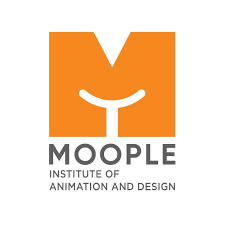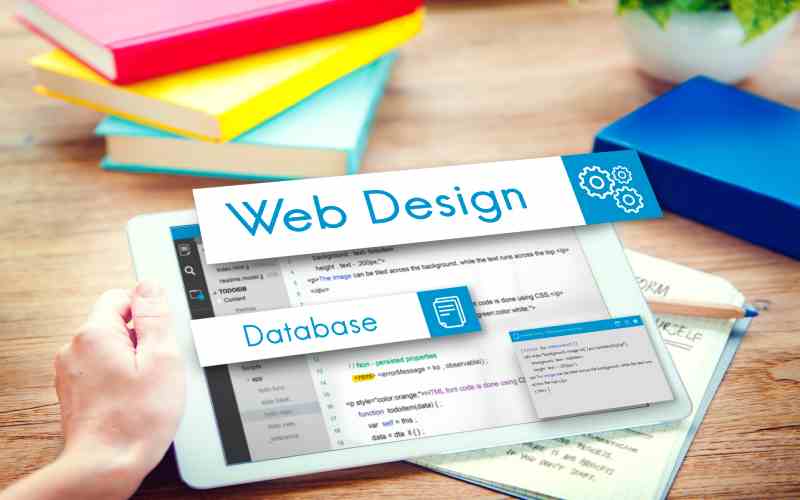In the rapidly evolving world of web development, the role of a UI (User Interface) designer is gaining prominence. As websites and applications become increasingly sophisticated, the need for skilled professionals who can create intuitive and visually appealing interfaces has never been greater. At Moople Institute, we recognize the demand for UI designers and provide comprehensive web design courses that pave the way for a successful career in UI design. In this blog post, we will explore the journey from completing a web design course to becoming a proficient UI designer, unlocking opportunities for creativity and innovation.
Understanding the Role of a UI Designer:
A UI designer is responsible for creating visually engaging and user-friendly interfaces for websites, applications, and other digital platforms. Their role goes beyond aesthetics; it involves understanding user behavior, optimizing user experience, and ensuring seamless interaction between users and the digital product. A UI designer collaborates with other professionals, including UX (User Experience) designers, developers, and stakeholders, to bring a cohesive and visually appealing design to life.

Step 1: Lay the Foundation with a Web Design Course at Moople Institute:
The first step on the journey to becoming a UI designer is to acquire a strong foundation from a web design institute. Moople Institute offers comprehensive web design courses that cover the essential principles and skills needed for creating well-designed and functional websites. This includes:
1. HTML and CSS Fundamentals: Understanding the basics of HTML (Hypertext Markup Language) and CSS (Cascading Style Sheets) is crucial for structuring and styling web content. Moople Institute’s courses provide hands-on training in coding and design principles.
2. Responsive Web Design: With the proliferation of mobile devices, responsive web design is a must. Students learn how to create websites that adapt seamlessly to various screen sizes and devices, ensuring a consistent user experience.
3. Web Design Tools: Proficiency in design tools like Adobe XD, Figma, or Sketch is essential for translating creative ideas into tangible designs. Moople Institute’s courses incorporate training on industry-standard tools to enhance students’ design capabilities.
4. Typography and Color Theory: Understanding the principles of typography and color theory is crucial for creating visually harmonious designs. Students learn how to choose fonts, colors, and layouts that enhance the overall user experience.
5. User Experience (UX) Principles: While a web design course primarily focuses on the visual aspects, it often includes an introduction to UX principles. This knowledge is valuable for UI designers as it provides insights into user behavior and expectations.
Step 2: Bridge the Gap with Additional UI Design Skills:
Once the foundation in web design is established, aspiring UI designers can take additional steps to enhance their skills and bridge the gap between web design and UI design from web design courses near you :
1. Advanced Design Courses: Consider taking advanced courses specifically focused on UI design principles. These courses delve deeper into topics such as interface design patterns, interaction design, and visual hierarchy.
2. Prototyping Skills: UI designers often create interactive prototypes to demonstrate the functionality of their designs. Learning prototyping tools like InVision or Adobe XD can significantly enhance a designer’s skill set.
3. User Interface Animation: Adding subtle animations to user interfaces can enhance the overall user experience. Familiarizing yourself with tools like Principle or After Effects for UI animations can set you apart as a UI designer.
4. Stay Updated with Design Trends: The field of UI design is dynamic, with trends evolving rapidly. Regularly follow multimedia course lists, and design blogs, attend webinars, and participate in design communities to stay informed about the latest design trends and best practices.
Step 3: Build a Strong Portfolio:
A compelling portfolio is the key to showcasing your skills and attracting potential employers. Assemble a portfolio that includes a diverse range of projects, demonstrating your proficiency in UI design. Here are tips for creating an impactful portfolio:
1. Showcase Real Projects: Include real-world projects from your web design course or personal projects that highlight your ability to solve design challenges.
2. Explain Your Design Process: Provide insights into your design process, including problem-solving, ideation, and the rationale behind your design decisions. This helps potential employers understand your approach to UI design.
3. Variety of Work: Include a variety of projects that showcase your versatility as a UI designer. This could include website redesigns, application interfaces, or even conceptual projects.
4. Highlight Collaboration: If you collaborate with other professionals, such as UX designers or developers, emphasize your ability to work in a team and contribute to the overall success of a project.
Step 4: Networking and Professional Development:
Building a career in UI design is not only about technical skills but also about networking and continuous learning. Here’s how you can expand your professional network and stay updated:
1. Attend Design Events and Conferences: Participate in design conferences, webinars, and local meetups to connect with professionals in the industry. Networking can lead to job opportunities and collaborations.
2. Online Platforms: Join design communities on platforms like Behance, Dribbble, and LinkedIn. Share your work, engage with others, and stay connected with the design community.
3. Continuous Learning: UI design is a field that constantly evolves. Stay curious and commit to continuous learning. Explore new tools, read design books, and consider taking advanced courses to stay ahead in the field.
4. Seek Feedback: Don’t hesitate to seek feedback on your work. Constructive feedback from peers, mentors, or online communities can help you refine your skills and grow as a designer.
Conclusion:
Becoming a UI designer after completing a web design course at Moople Institute is a journey filled with learning, creativity, and opportunities. With a solid foundation in web design, additional UI design skills, a strong portfolio, and a proactive approach to networking and professional development, you can carve a successful path in the dynamic field of UI design.
Moople Institute provides the educational foundation needed for this journey, offering courses that equip aspiring designers with the skills demanded by the industry. Whether you are a recent graduate, a career changer, or passionate about design, the path to becoming a UI designer starts with the right education and a commitment to continuous growth. Embrace the possibilities that await you as you embark on this exciting and fulfilling career journey with Moople Institute. Your future as a UI designer is just a course away!

